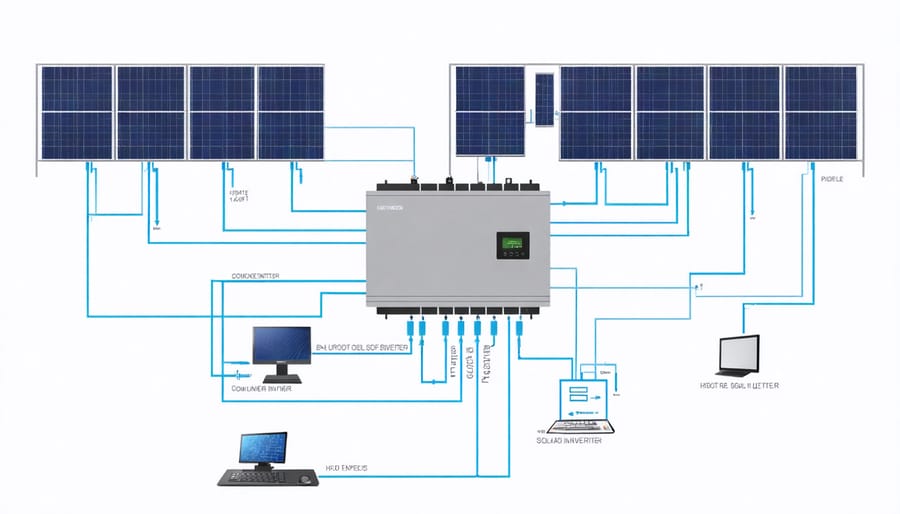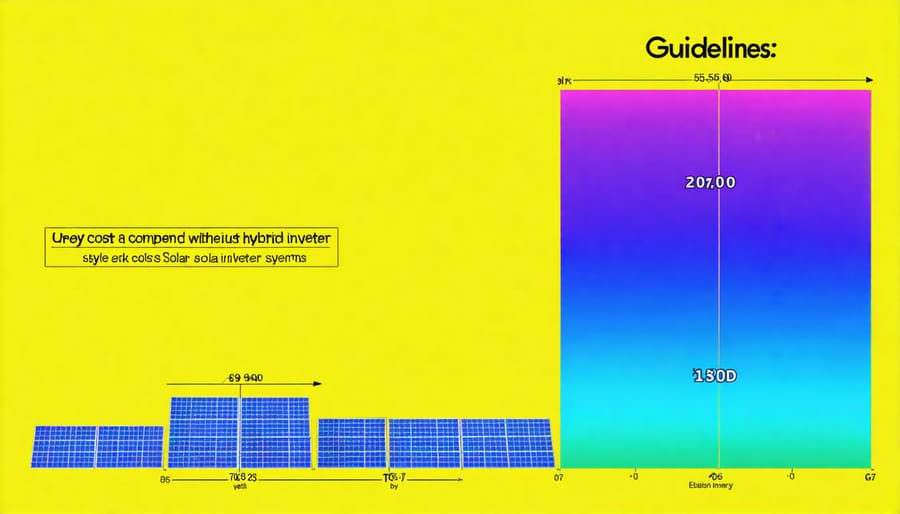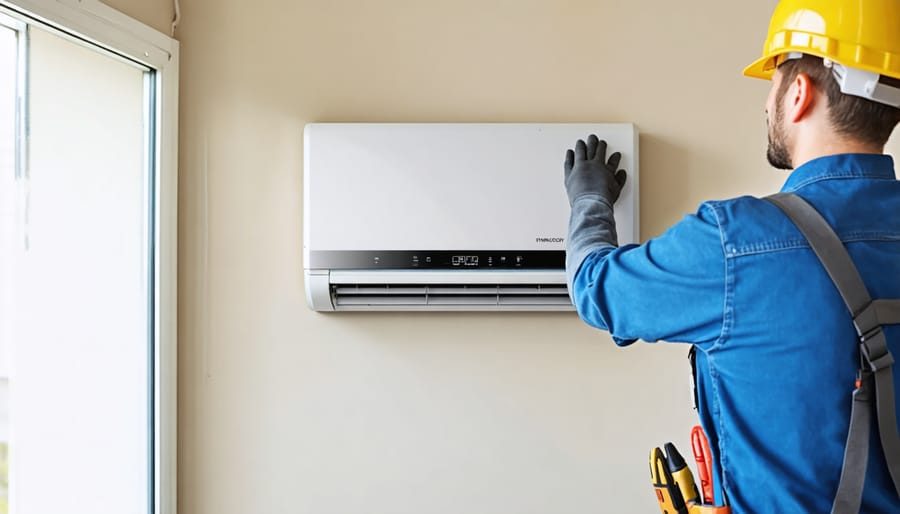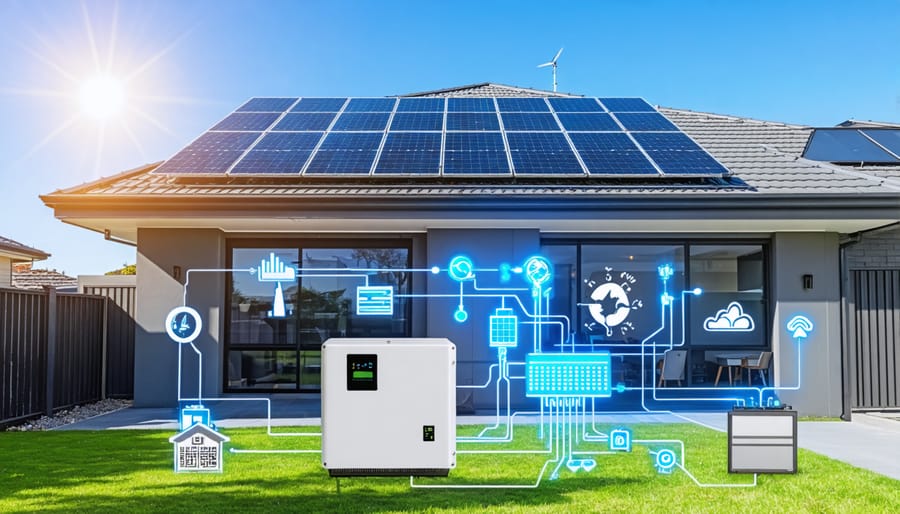Revolutionizing Australia’s solar energy landscape, hybrid solar inverters stand at the forefront of renewable power innovation, seamlessly blending grid connectivity with battery storage capabilities. These sophisticated power management systems represent the next evolution in residential and commercial solar installations, offering homeowners unprecedented control over their energy consumption and storage.
Unlike traditional inverters that simply convert DC power from solar panels to AC power for home use, hybrid inverters intelligently manage power flow between solar panels, batteries, and the grid. This dynamic functionality proves particularly valuable in Australia’s diverse climate zones, where energy needs and solar generation can vary dramatically throughout the year.
As electricity prices continue to rise and grid reliability becomes increasingly uncertain, hybrid solar inverters emerge as a strategic investment for Australian households. They enable energy independence during blackouts, maximize self-consumption of solar power, and provide the flexibility to adapt to future energy challenges. Whether you’re upgrading an existing solar system or planning a new installation, understanding hybrid inverter technology is crucial for making informed decisions about your home’s energy future.
Why Hybrid Solar Inverters Are Changing Australian Energy Storage
The All-in-One Solution
Hybrid solar inverters represent a game-changing innovation in Australia’s clean energy transition, offering a streamlined solution that combines the functionality of multiple devices into one efficient unit. These clever devices act as the brain of your solar system, seamlessly managing power flow between your solar panels, battery storage, and the grid.
Unlike traditional setups that require separate solar and battery inverters, hybrid inverters handle both functions in a single box. This integration not only saves valuable wall space but also reduces installation complexity and costs. Think of it as having a smart energy traffic controller that directs solar power to where it’s needed most – whether that’s powering your home directly, charging your batteries, or feeding excess energy back to the grid.
The beauty of hybrid inverters lies in their intelligent power management. During the day, they can simultaneously power your home and charge your batteries, while at night, they smoothly transition to battery power, ensuring you maintain a reliable energy supply. This all-in-one approach makes hybrid inverters particularly attractive for Australian households looking to maximize their energy independence while keeping their solar setup neat and simple.

Grid Independence and Backup Power
Hybrid solar inverters offer a game-changing solution for Australians seeking energy independence and reliable backup power. During blackouts, these smart devices automatically switch to off-grid mode, ensuring your home stays powered using stored solar energy. Unlike standard solar setups that shut down during outages, hybrid systems keep essential appliances running smoothly.
This capability proves invaluable during extreme weather events or grid maintenance, which are becoming more common across Australia. Imagine keeping your lights on, fridge running, and air conditioning working while the rest of the neighbourhood is in darkness. Many Australian homeowners report feeling more secure knowing they’re not entirely dependent on the grid.
The system’s intelligent power management also helps reduce reliance on utility companies during peak periods when electricity rates soar. By storing excess solar energy during the day, you can use your own power during evening peak times, effectively creating your personal micro-grid. This level of energy independence not only provides peace of mind but also offers significant long-term cost savings while contributing to a more resilient and sustainable energy future.
Cost Benefits for Australian Households

Long-term Savings and ROI
Investing in a hybrid solar inverter system proves to be a smart financial decision for Australian households, with substantial returns materialising over time. Most homeowners see a complete return on their initial investment within 4-6 years, depending on their energy consumption patterns and local electricity rates.
The long-term savings are particularly impressive when you consider the average Australian household can reduce their electricity bills by 60-80% with a properly sized hybrid system. For a typical family home in Sydney, this could translate to annual savings of $1,500-2,000 on energy costs.
Beyond direct energy savings, hybrid inverters offer additional financial benefits through feed-in tariffs when excess energy is exported to the grid. While these rates vary by state and energy retailer, households can earn between 5-12 cents per kilowatt-hour for their surplus power.
The system’s battery storage capability also provides protection against rising electricity costs, which have increased by an average of 3-5% annually in recent years. By storing energy during off-peak periods and using it during peak times, homeowners can effectively hedge against future price hikes.
When factoring in the current government incentives and renewable energy certificates, the total financial benefit over a 25-year period can exceed $25,000 for a standard household system. This figure includes the reduced maintenance costs compared to traditional solar setups and the increased property value that comes with having a modern, efficient energy system.
Available Rebates and Incentives
Australian homeowners can take advantage of several government incentives when installing hybrid solar inverter systems. The Small-scale Renewable Energy Scheme (SRES) offers Small-scale Technology Certificates (STCs), which can significantly reduce the upfront cost of your solar installation. The number of STCs you receive depends on your system size and location, with most homeowners saving between $2,500 and $4,000 on their initial investment.
State-specific programs provide additional benefits. In Victoria, the Solar Homes Program offers rebates up to $1,400 for solar installations, while South Australia’s Home Battery Scheme provides subsidies up to $2,000 for battery storage systems connected to hybrid inverters. Queensland residents can access interest-free loans for solar and battery systems through the state’s interest-free loan scheme.
Many local councils also offer their own incentive programs, including expedited permit processing and reduced fees for solar installations. Energy retailers frequently provide feed-in tariffs for excess power generated, though rates vary by provider and location.
For businesses, the instant asset write-off scheme allows immediate deductions for solar system installations, making commercial hybrid inverter systems more financially attractive. Additionally, some states offer specific grants for businesses transitioning to renewable energy solutions.
It’s worth noting that these incentives are subject to change and may have specific eligibility criteria. Consulting with accredited solar installers can help you identify all available rebates and ensure you maximise your benefits.
Choosing the Right Hybrid Inverter
Size and Capacity Considerations
Selecting the right size hybrid solar inverter for your home is crucial for optimal system performance and cost-effectiveness. The sizing process begins with calculating your household’s daily energy consumption, typically measured in kilowatt-hours (kWh). Most Australian homes consume between 15-25 kWh per day, but your specific needs may vary based on lifestyle and appliance usage.
To determine the appropriate inverter capacity, consider both your current energy needs and potential future expansion. A good rule of thumb is to choose an inverter rated at 75-85% of your solar panel array’s capacity. For example, if you have a 6.6kW solar system, a 5kW hybrid inverter would be suitable.
When evaluating options from leading inverter brands, factor in battery storage capacity requirements. For most Australian households, a battery storage capacity between 5-15kWh provides adequate backup power while remaining cost-effective.
Consider these key factors when sizing your hybrid inverter:
– Peak power demands during high-usage periods
– Available roof space for solar panels
– Budget constraints and future expansion plans
– Local climate conditions and seasonal variations
– Battery storage requirements
– Grid export limitations in your area
It’s recommended to work with a qualified solar installer who can assess your specific circumstances and recommend an appropriately sized system. They can perform detailed load analysis and consider factors unique to your location, ensuring your hybrid solar inverter meets both current needs and future energy goals.
Key Features to Look For
When selecting a hybrid solar inverter for your Australian home, there are several critical features to consider before making your investment. While there are many best solar inverters in Australia, choosing one with the right specifications is crucial for optimal performance.
First, look for IP65 or higher weatherproof rating, essential for withstanding Australia’s harsh climate conditions, from coastal salt spray to outback dust. Temperature tolerance is equally important – your inverter should operate efficiently in temperatures ranging from -10°C to 50°C.
Battery compatibility is another vital feature. The inverter should support various battery technologies and voltages, offering flexibility for future system upgrades. Smart monitoring capabilities are essential, allowing you to track energy production, consumption, and battery status through user-friendly apps or web interfaces.
Power capacity and efficiency ratings deserve careful attention. For most Australian homes, a hybrid inverter with 5-10kW capacity is suitable, but ensure it maintains high efficiency (95% or above) across different operating conditions. Look for models with anti-islanding protection and grid-support features that comply with AS/NZS 4777.2:2020 standards.
Warranty terms are particularly important in the Australian market. Opt for inverters with at least a 5-year warranty, though 10 years is preferable. Consider manufacturers with local support and service centres in Australia, ensuring prompt assistance when needed.
Finally, prioritize inverters with backup power capability, allowing essential circuits to run during grid outages. This feature proves invaluable during extreme weather events or network maintenance periods.
Installation and Maintenance Tips

Professional Installation Requirements
In Australia, the installation of hybrid solar inverters must be performed by Clean Energy Council (CEC) accredited installers to ensure compliance with national standards and safety regulations. This accreditation demonstrates that the installer has the necessary training and expertise to handle both solar and battery systems safely and effectively.
When selecting an installer, look for companies with specific experience in hybrid systems, not just standard solar installations. Request references and examples of previous hybrid installations, and verify their current CEC accreditation status through the Clean Energy Council’s website.
Your installer should provide detailed documentation, including system specifications, warranty information, and emergency procedures. They must also ensure compliance with AS/NZS 4777.2 (Grid Connection of Energy Systems via Inverters) and AS/NZS 5033 (Installation and Safety Requirements for Photovoltaic Arrays).
Local council approval may be required before installation, particularly for battery storage components. A qualified installer will handle these permissions and ensure all necessary safety measures are in place, including proper ventilation for battery storage and appropriate IP ratings for outdoor components.
Post-installation, ensure you receive a Certificate of Compliance, which confirms the system meets all relevant Australian standards. This documentation is crucial for insurance purposes and may be required for any warranty claims or future system modifications.
Maintaining Your System
Regular maintenance of your hybrid solar inverter is crucial for ensuring optimal performance and longevity. While modern weather-resistant inverter systems are built to last, a few simple maintenance steps can significantly extend their lifespan.
Start with monthly visual inspections of your inverter’s display panel to check for error codes or unusual readings. Keep the area around your inverter clean and free from dust, ensuring proper ventilation. In the harsh Australian climate, it’s particularly important to maintain clearance around the unit to prevent overheating.
Listen for any unusual sounds during operation – clicking or buzzing noises might indicate potential issues. Monitor your system’s performance through the accompanying app or monitoring system, watching for unexpected drops in efficiency.
For troubleshooting, begin with the basics: check your circuit breakers and ensure all connections are secure. If you notice significant performance drops during our scorching summers, consider scheduling professional maintenance before the peak season.
Most importantly, maintain a regular service schedule with a qualified technician at least once a year. They’ll conduct thorough inspections, clean internal components, and update firmware if necessary. Remember to keep detailed records of all maintenance activities and system performance – this information is invaluable for warranty claims and optimising system efficiency.
Don’t hesitate to contact your installer if you notice any concerning changes in performance or unusual behaviour. Early intervention can prevent more serious issues down the track.
Hybrid solar inverters represent a significant leap forward in Australia’s renewable energy journey, offering homeowners and businesses the perfect balance of efficiency, reliability, and energy independence. As we’ve explored throughout this article, these innovative devices combine the best features of grid-tied and battery storage systems, providing a flexible solution for our evolving energy needs.
The future outlook for hybrid inverter technology is particularly promising. With continuing advances in smart technology and energy management systems, we can expect to see even more sophisticated features and improved efficiency in upcoming models. The increasing affordability of battery storage systems, coupled with rising electricity costs, makes hybrid inverters an increasingly attractive investment for Australian households.
The role of hybrid inverters in creating a more resilient and sustainable energy future cannot be understated. They’re not just about saving money or ensuring backup power – they’re about empowering consumers to take control of their energy usage while contributing to a cleaner environment. As our energy grid continues to evolve and adapt to renewable sources, hybrid inverters will play a crucial role in managing and optimizing our power consumption.
For those considering making the switch, there’s never been a better time to invest in hybrid solar technology. With supportive government policies, decreasing installation costs, and improving technology, hybrid inverters are set to become a cornerstone of Australia’s renewable energy landscape.

